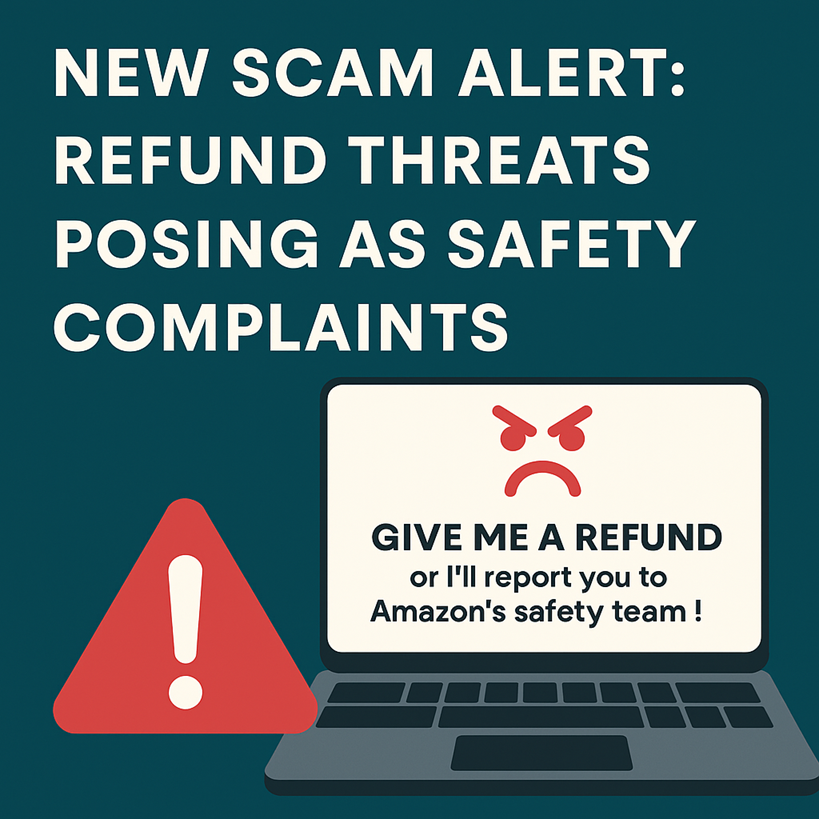Coordinated Abuse: When “Safety Complaints” Aren’t Real
Coordinated Abuse: When “Safety Complaints” Aren’t Real
In the last few weeks, we’ve seen a sharp rise in a very specific – and very dangerous – type of Amazon buyer abuse. It’s not review manipulation. It’s not counterfeit claims. It’s something quieter, more strategic, and often more damaging:
Refund threats disguised as safety complaints.
These messages don’t come from the usual angry customers. They come in with calm, calculated language – usually copy-pasted across multiple buyer accounts – and are designed to do one thing: trigger Amazon’s internal safety protocols without ever needing to provide proof.

What It Looks Like
These messages typically follow a specific structure:
“I will not provide proof. I will escalate this to Amazon’s Safety Team. I expect a full refund immediately, no conditions. This is your only chance to avoid escalation.”
Sellers often receive identical messages from different buyer names, sometimes just days apart. Many of these come from the same delivery region or share the same billing country. Some even link back to the same IP range.
They all have the same demands:
- No return
- No evidence
- Full refund now
And the result? If Amazon sees multiple unresolved complaints that mention safety or product condition issues, their system flags the ASIN – or the account – automatically.
What Happens Next
These cases can escalate quickly:
- Listings get deactivated.
- FBA inventory is frozen.
- Sellers are left with no warning – and no clear path to reverse it.
The most dangerous part? Amazon treats these as legitimate safety concerns unless you act strategically. The burden falls on the seller to show that something doesn’t add up – and to document it before the system acts.
What You Should NOT Do
This is where most sellers make costly mistakes. Don’t fall into these traps:
- DO NOT engage emotionally. Don’t debate the buyer or use words like “dangerous” or “hazardous.” That can backfire.
- DO NOT refund unconditionally. Never issue a refund unless the product is returned and verified. If it’s FBA, direct the buyer to Amazon’s return process.
What You SHOULD Do
- DO use Amazon’s “Report Message” tool to flag each incident. It won’t solve the issue – but it will leave a breadcrumb trail that Amazon can reference later.
- DO open a proactive case with Amazon. Ask them to add an internal annotation noting that you’ve received copy-pasted messages alleging safety concerns. Make it clear you are not requesting enforcement – just documentation in case of escalation.
Why This Matters
Amazon’s system doesn’t evaluate intent. It reacts to keywords, complaint frequency, and risk triggers. If enough “safety” messages land against your ASIN in a short period of time, you’re guilty until proven compliant.
But if you’ve documented the abuse early – and done it calmly and strategically – you give Amazon an alternative story to recognize.
That’s the goal. Not escalation. Not panic. Just: strategy.
If this hasn’t happened to you yet, good. Save this article.
If it has – you know exactly how fast it can spiral.
And if you need help framing the right annotation message or replies? We’ve written hundreds. We know how to get Amazon to take it seriously – without pushing the wrong buttons.
